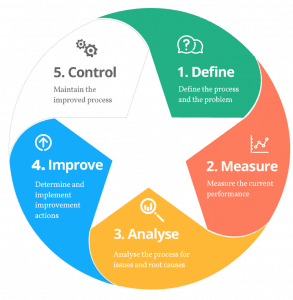Leveraging Business Process Management and Six Sigma
Business Process Management (BPM) and Six Sigma have been around for decades now. Both have gathered significant impact on organizations. How do business analysts leverage the power of both BPM and Six Sigma?
In this article, we discuss how both these methods complement each other.
What is Business Process Management (BPM)?
Business process management (BPM) deals with various methods to discover, model, analyze, measure, improve, optimize, and automate business processes. business process management (BPM) focuses on improving organizational performance by effectively managing business processes. Most processes can be structured and mostly repeatable. Though not mandatory, information technology is often used with business process management (BPM).
Business process management (BPM) is different from project and program management. At the same time, a business process management (BPM) establishment can follow project management. In project management, process management is the use of a repeatable process to improve the outcome of projects. Program management is concerned with managing a group of inter-dependent projects.

As an approach, business process management (BPM) sees processes as important assets of an organization that must be understood, managed, and developed to announce and deliver value-added products and services to clients or customers. This approach closely resembles other total quality management or continuous improvement process methodologies. Most methods such as ISO 9000, CMMI, SPICE, Lean and Six Sigma promote the process approach to managing an organization. In business process management, the sequence of work can vary from instance to instance: there are gateways, conditions; business rules, etc.
| Process Name | Business criticality | KPI | Expected Performance | Current performance | Improvement project needed? |
| Software development | High | # of post-delivery defects | < 0.1 per person-month of development effort | .5 defects per person-month | Yes |
| Digital marketing | High | Domain authority | Moz rating 32 | Moz rating 31 | No |
| ……. |
What is Six Sigma?
Six Sigma is a systematic, data-driven approach improvement methodology for eliminating defects in a product, process or service. Developed in the early 1980s by Bill Smith at Motorola, became a popular management approach at General Electric (GE) with Jack Welch in the early 1990s. The Six-sigma approach was based on the teachings of Edward Deming, Walter Shewhart, and Ronald Fisher among many others. Hundreds of companies around the world have adopted Six Sigma as a way of doing business.
The term Sigma comes from statistics. In statistics, Sigma represents the population standard deviation, which is a measure of the variation in a data set collected about the process. An item is considered defective if the measured value is outside the specification limits. A six-sigma process has a process mean six standard deviations from the specification limits. This provides sufficient allowance for the process’s natural variation to remain within the specification limits.
 Image source: https://www.greycampus.com/blog/quality-management/six-sigma-certification-how-does-it-benefit-your-career-and-organization
Image source: https://www.greycampus.com/blog/quality-management/six-sigma-certification-how-does-it-benefit-your-career-and-organization
Now, how do we couple BPM and Six Sigma?
Business process management (BPM) can act as a foundation for Six Sigma. Using a business process management approach, we can identify suitable processes where Six Sigma project should be carried out. The ideal processes are the ones which are business-critical but are performing low. Once, we improve the performance of this critical process, we can shift our focus to the next process.
The 2nd aspect where Business process management (BPM) can support Six Sigma is in the area of continual monitoring of processes. Six Sigma is a project-driven approach; hence the activities are closed once the processes defects are brought within desired limits. But it can so happen that the process performance deteriorates over time. This is where the BPM process can trigger another Six Sigma project if needed.
Suggested readings
Business analysis estimation - Theory vs. Practice
You May Also Like
These Related Stories

Spot the similarities - NFRs and building foundation

Six Blind Men and Enterprise Architecture



No Comments Yet
Let us know what you think